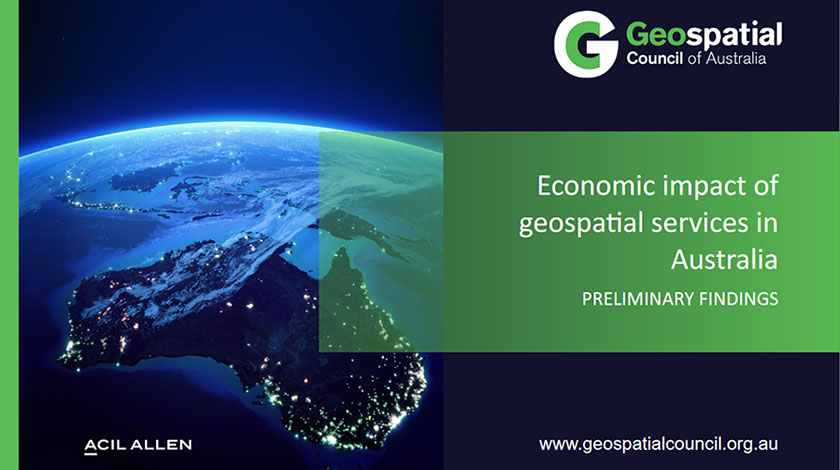By 2033-34, it is projected that the economic impact of geospatial services in Australia could contribute an additional $81 billion in GDP. This is the headline finding of the Geospatial Council of Australia’s (GCA) ‘Economic impact of geospatial services in Australia’ Report. The preliminary findings were launched today in Sydney, at Locate24, GCA’s annual national geospatial conference.
The study, the first of its kind since 2008, was commissioned by GCA and carried out by a team from ACIL Allen. This collaborative effort takes on added importance as the geospatial sector navigates the complexities of the post-pandemic landscape. The study is not just an analysis of the current industry value – it’s a forward-looking initiative projecting the potential impact of the geospatial industry on the Australian economy in 2034.
Geospatial information and services are critical to increasing productivity, managing natural resources, and the welfare of all Australians.
Key findings:
- The sector in 2023-24 will contribute an additional $39 billion to Australian GDP and over 12,000 jobs.
- By 2033-34, it is projected that the contribution could be an additional $81 billion in GDP, and an additional 22,000 jobs, assuming a favourable operating scenario.
These forward-looking projections can be considered conservative as the analysis has yet to include actual impacts from digital twins which are potentially significant. Furthermore, the report breaks down the impact by state and territory. Some other impacts of geospatial can be difficult to quantify and monetize. These are therefore articulated in a series of sector-based case studies that showcase how geospatial services add value across the Australian economy.
“The geospatial sector is critical to the economy. Few, if any, industry sectors are not using geospatial technologies in their operations,” says Tony Wheeler, CEO of GCA. “By understanding where we stand today and envisioning our potential influence on the national economy over the next decade, we are shaping policies that will not only foster growth but also position the geospatial sector at the heart of Australia’s broader narrative.”
This preliminary report is the precursor to a more detailed report that will be released at the end of June. A copy can be downloaded here: view report


0 Comments